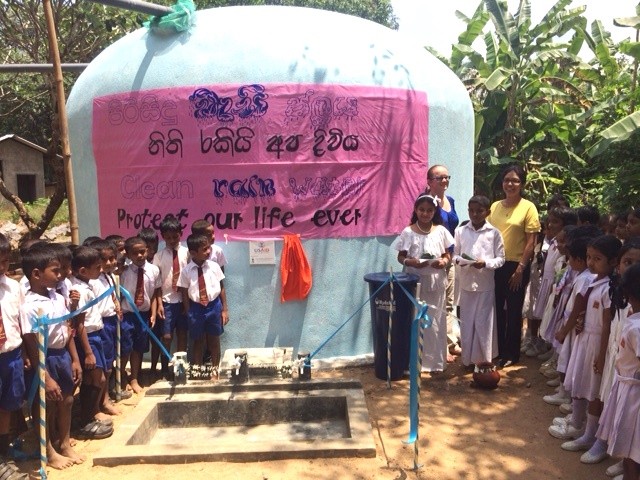Press Release Shim
Speeches Shim

For Immediate Release
Mapakadaweva, March 22: Students and teachers from Keselpotha Maha Vidyalaya in Uva Province joined representatives from the United States Agency for International Development (USAID) yesterday to inaugurate a rainwater harvesting system at their school, providing clean drinking water year-round. Since 2012, USAID has partnered with local organizations to build more than 1,000 such systems in rural schools, and households in the drought and flood-prone districts of the North, East, and Uva Provinces.
“As the world marks International Water Day on March 22, the American people are happy to help provide students in rural schools in Sri Lanka with reliable access to clean water,” said U.S. Ambassador to Sri Lanka Atul Keshap.
Through a partnership with Lanka Rain Water Harvesting Forum, the United States promotes this ancient Sri Lankan technology as a safe and clean alternative to surface and ground water resources. This initiative also trains government officials and experts on the benefits of rainwater harvesting technology; establishes mobile weather stations to reduce risk of disasters; repairs more than 400 abandoned rainwater harvesting systems; and conducts research and development.
In addition, USAID will provide 12,000 water connections to rural families and drinking water for about 10,000 school children; support sanitation facilities and good hygienic practices in local communities; repair irrigation and drainage channels to reduce future flooding; and plant 5,000 trees to conserve the natural environment. Programs across 143 villages also help women leaders to develop early warning systems and plans to prepare for, and mitigate against, future natural disasters.
Since 1956, the U.S. Government and USAID have invested over $2 billion in agricultural and business development, education, health, energy and natural resources, good governance, and humanitarian assistance.

Comment
Make a general inquiry or suggest an improvement.